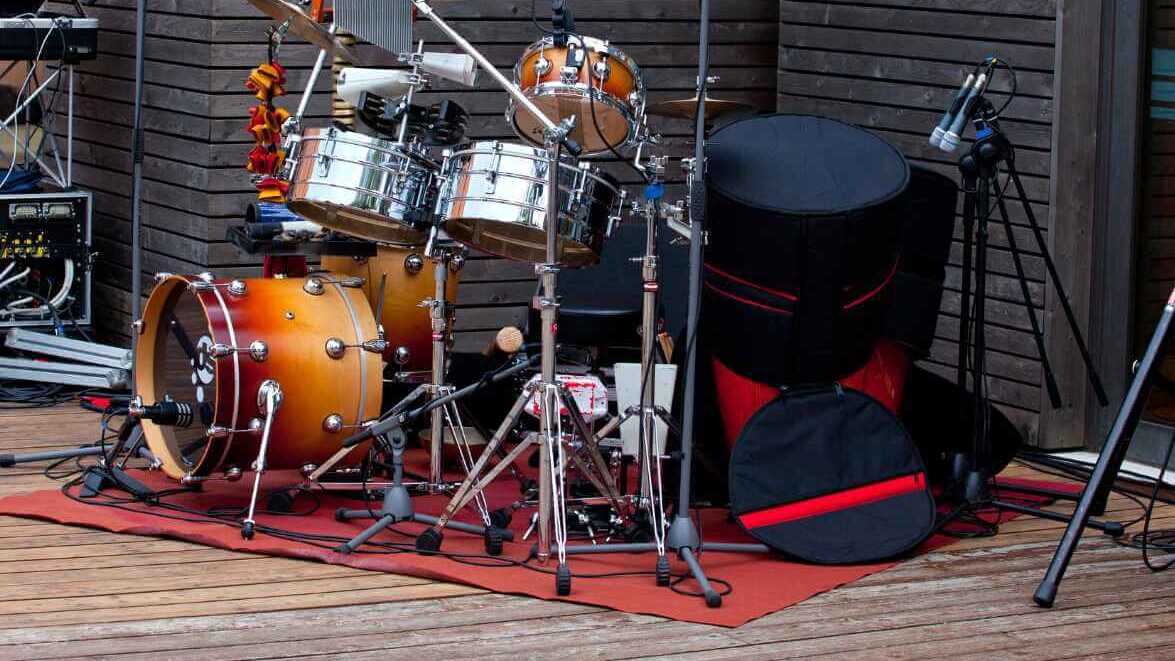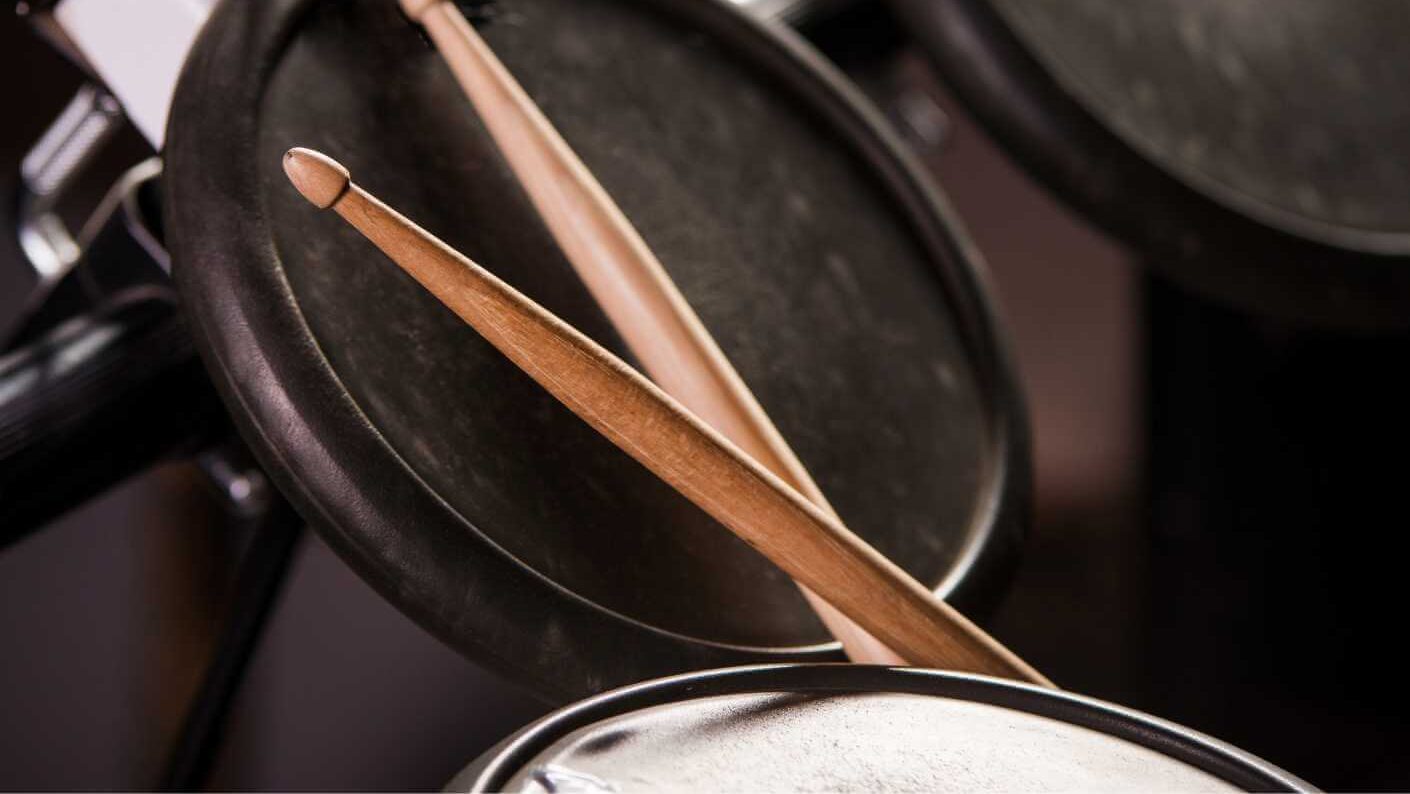Hey there, fellow drum aficionados! It’s Ron here, your percussion-loving pal, ready to dive deep into the heartbeat of every band—the drum kit. But not just any drum kit, we’re talking about the lifeblood of the touring drummer: the touring drum kit. Hitting the road with a band is an electrifying experience, but it also means facing a unique set of challenges when it comes to your gear. Every gig, every venue, and every moment on stage demands a drum setup that’s not just good but great—both in portability and sound. So, let’s kick things off and discover how to strike that perfect balance!
The Quest for Portability
When it comes to touring, size matters — the smaller, the better, without compromising on sound. Drummers are often faced with the challenge of downsizing their beloved kits into something more road-friendly. This means choosing kits that can easily fit into vans, under bus seats, or into cargo holds, yet still pack a punch during a performance.
The components of your drum kit that are most susceptible to damage during travel are the ‘breakables’ — your snare, cymbals, and hardware. It’s essential to consider not just the portability but also the durability of these items. Opt for gear that has a reputation for being road-tough and can withstand the bumps and bruises of constant movement.
Sound Quality on Stage
On stage, the quality of your drum sound can make or break a performance. However, when you’re playing a different venue every night, you’re at the mercy of varying acoustics. A portable kit must have the capability to deliver consistent sound quality in diverse environments, whether it’s a cozy club or a large outdoor festival.
Getting the sound right for portable kits often involves adept use of miking techniques and amplification. Knowing where to place mics to capture the full resonance of your kit and how to adjust levels is crucial. It’s all about understanding the tech side of your instrument to ensure the audience hears every beat as intended, no matter the venue size.
Choosing the Right Shell Materials
The material of your drum shells can significantly influence both the sound and portability of your kit. Traditional wood shells offer warmth and depth but can be heavy. Modern synthetics, on the other hand, are lighter and often more durable, making them excellent for travel, though they can sound different.
Different woods offer different sound characteristics. Maple provides a balanced tone, birch gives a punchier sound, and mahogany offers a darker, warmer tone. When choosing a touring kit, you must consider how these tones will translate across various venues and how the weight of these woods will affect portability.

Hardware That Holds Up
The rigors of the road demand hardware that can take a beating. High-quality stands, pedal systems, and throne bases made from robust materials are non-negotiable for the touring drummer. They might add a bit of weight, but their reliability is worth their weight in gold.
When it comes to hardware, you’re balancing weight and stability. Heavy-duty stands are stable but can be a burden to transport. Lightweight hardware is easy to carry but may not offer the same stability. The trick is to find that sweet spot where your hardware is both portable and steady.
Cymbals That Travel Well
Cymbals are the crown jewels of a drum set and they need to be chosen with care for touring. Not only do they need to sound good, but they also need to withstand the stresses of travel. Some cymbals are made thinner for a richer sound, but they may not be as durable for the road.
Cymbal bags and cases are your first line of defense against damage in transit. Hard cases offer the most protection but can be bulky and heavy. Padded bags are lighter and more convenient but offer less shock absorption. It’s important to find a balance that suits your travel needs.
The Evolution of Compact Drum Kits
Drummers have always sought ways to make their kits more portable. From the jazz kits of the 1940s to the compact kits of today, there’s a rich history of innovation in drum design aimed at reducing size without sacrificing sound.
Today’s market offers a plethora of options for the traveling drummer, from nestable shells to flat-pack kits. These innovations make setup and tear-down quick and painless, all while fitting snugly into the back of a compact car or overhead storage on a plane.

Custom Modifications for the Touring Drummer
The DIY spirit thrives among drummers who tour frequently. Many choose to modify their kits with lighter materials, quick-release mechanisms, or even build their own custom cases to fit exactly what they need.
For those who prefer a professional touch, customization services can work wonders, creating bespoke setups that cater exactly to a drummer’s needs on the road, whether that’s integrating electronics or designing a unique hardware system.
Drum Techs: The Unsung Heroes
In the tapestry of a live concert, the spotlight shines on the musicians, with the drum techs often left in the shadows. Yet, it is within these shadows that the unsung heroes of rhythm reside. Drum techs work tirelessly, ensuring that each piece of the kit is precisely tuned, positioned, and maintained. They are the custodians of the drummer’s arsenal, an essential element to the success of the performance.
The life of a drum tech is one of relentless detail and dedication. They arrive at the venue long before the first ticket is scanned, setting the stage for the night’s rhythm section. As the venue fills with eager fans, the drum tech has already conducted a symphony of hardware checks, head replacements, and sound level adjustments. Their work, often unnoticed, is critical to the auditory experience of every attendee.
Mastery of the Craft
A drum tech’s expertise extends far beyond basic maintenance. These individuals often have deep knowledge of acoustics and electronics, enabling them to navigate the complexities of modern drumming equipment. They must be swift to react, fixing broken heads mid-show or adjusting microphones knocked out of place by an energetic performance. Their role requires a balance of technical skill, physical dexterity, and a deep understanding of the drummer’s personal style and preferences.
The relationship between a drummer and their tech is deeply collaborative. Trust and communication are the foundation of this partnership, with many drum techs able to anticipate the needs of their drummers without a word being spoken. The bond that forms through hours of rehearsals and performances is often one of mutual respect and camaraderie.
The Unseen Performance
While the audience revels in the music, the drum tech remains vigilant, their eyes and ears constantly scanning for any issues that might arise. They are the first line of defense against any technical mishap that could disrupt the show. In many ways, a drum tech’s performance is as critical as that of the musicians they support. They must be as adept with a drum key as the drummer is with their sticks, ensuring that every piece of the kit performs as it should, from the snare to the kick drum.
As the final note rings out and the crowd roars its approval, the drum tech begins the meticulous process of breaking down the kit. Their work continues long after the applause has faded, wrapping cables, packing cases, and preparing for the next show. The impact of a drum tech’s work endures in the memories of the audience and the quality of the performance they helped create. They are truly the unsung heroes of the drumming world, the keepers of the beat, and the silent partners in every drummer’s success.

Electronic Drums: A Touring Option?
In the realm of touring, electronic drums have carved out their own niche. These kits offer an array of sounds and presets that can emulate traditional kits or bring entirely new timbres to the performance. For bands that traverse across genres or wish to bring studio-quality sound to the live stage, electronic kits are an invaluable asset.
The portability and versatility of electronic drums make them a pragmatic choice for touring musicians. They can be compact, easier to transport, and set up in a fraction of the time it takes to assemble an acoustic kit. Additionally, their volume is easily controlled, which is a godsend in venues with strict sound limitations. With advancements in technology, the gap between electronic and acoustic drum feel is narrowing, allowing drummers to transition between studio recording and live performance with ease.
Packing and Transport Tips
The life of a touring drummer isn’t just about the performance; it’s equally about the efficiency and security of transporting their kit. Cases and bags designed for drums can offer padded protection while keeping the gear organized. Using color-coded cases or tagging each piece can speed up the setup and ensure nothing is left behind.
Loading a drum kit into a van or trailer is like playing a game of Tetris. Drummers learn to utilize space optimally, ensuring each drum, cymbal, and stand has a secure spot. Investing in hardware with stackable features or using rack systems can also consolidate space, making transport both safer and more straightforward.
Staying Consistent in Different Venues
Every venue has its unique acoustic profile, which can drastically affect the sound of a drum kit. The key to consistency lies in understanding these acoustic variables and adapting the kit and playing style to match. Drummers may use different tuning techniques, heads, or even dampening tools to maintain their signature sound regardless of the venue.
Despite the acoustical differences, the physical setup of the kit should remain constant. A drummer’s muscle memory relies on the consistent placement of drums and cymbals. This familiarity allows for a reliable performance, letting the drummer focus on their playing rather than adjusting to a new configuration each night.
The Symphony of Motion
Touring with a drum kit is a symphony of motion, a harmonious blend of preparation, performance, and adaptability. Each movement, from packing to setup, tuning to teardown, plays a critical role in the touring drummer’s narrative. It’s a testament to their dedication to their craft and their audience.
For the audience, the show may begin with the first count-in and end with the final cymbal crash, but for the touring drummer and their crew, the performance never really stops. It’s a continuous cycle of ensuring that every beat resonates as intended, every night, in every city. The touring drum kit, whether acoustic or electronic, is not just an instrument; it’s the vessel through which drummers connect with fans, delivering the pulse that drives the heart of the music.
feels like a beginner click here for 5 ESSENTIAL DRUM KIT SETUPS FOR BEGINNERS




